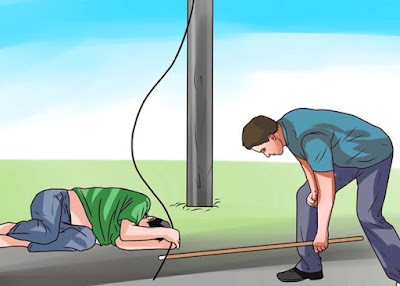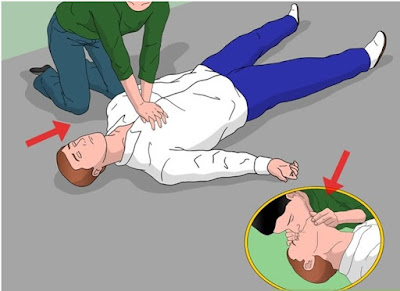Being an Electrical Engineer, it is very much important to know about Electrical safety and what should be the action if someone gets shock. Safety is the first priority in any Industry and it is the responsibility of an Electrical Engineer to make aware of the Electrical safety to his/her subordinate.
In most cases of electric shock and collapse, it is the lungs and the diaphragm (the thin sheet of muscles which lies below the lungs) that stop working and there is a very good chance of revival by applying quickly artificial respiration.
In cases of severe shock, respiration is seldom established under an hour while 3 to 4 hours or more might be found necessary to restore normal breathing. It is, therefore, essential that in all cases of electric shock where the condition of the patient is doubtful or the patient is unconscious or not breathing, artificial resuscitation should be continued until death is diagnosed by a physician or until rigor mortis sets in.
Removal from Contact:
- If the person is still in contact with the apparatus that has given him shock, switch off the electric circuit at once. If it is not possible to switch off the circuit quickly, no time should be lost in removing the body from contact with the live conductor by using Rescue Stick.
- The victim’s body should not be touched with bare-hand; instead rubber gloves should be worn. However, if the rubber gloves are not available the victim should be pulled off from the live conductor by his coat, shirt, etc, if they are not wet or with any other dry cloth or even dry newspaper folded into 3 or more thicknesses.
- Wooden rods or broom handle may also be used to raise the body or to detach it from live conductor. A good plan is to stand on dry board or stool or oh few layers of thick newspaper bundles or even dry sacking and remove the victim from the live conductor.
Immediate Action to Recover Patient:
- When a man has received a severe electric shock, his breathing usually stops. In accidents of this kind, speed may save the injured man’s life. Hence, no time should be wasted in sending for a doctor but the patient should not be neglected during this period.
- The patient should not be placed in such a position which may bring pressure on the burns he may have sustained. He should also not be exposed to cold. Stimulants should not be administered unless recommended by a doctor. Cold Water may be given in small quantities in cases of electric fire or asphyxia and smelling salts, may also be administered in moderation.
- Artificial respiration without interruption, until natural breathing is restored, should be continued. Cases are on record of success after about 3 to 4 hours effort and even more.
- Resuscitation should be carried on at the nearest possible place of accident. The patient should not be removed from this place until he is found breathing normally, and then also moved only in a lying position. Should it be necessary due to extreme weather conditions or other reasons to remove the patient before he is breathing normally, he should be kept in a prone position, and placed on a hard surface or on the floor of a conveyance, resuscitation being carried on during the time that he is being moved.
- A brief return of spontaneous respiration is not a certain indication for terminating the treatment. Not infrequently, the patient, after a temporary recovery of respiration, stops breathing again. The patient should be watched, and if normal breathing stops, artificial respiration should be resumed at once.
Upon Recovery:
- When the patient revives, he should be kept lying down and not allowed to get up or be raised under any circumstances without the advice of a doctor. If the doctor has not arrived by the time the patient has revived, he should be given some stimulant, such as a teaspoonful of aromatic spirits of ammonia in a small glass of water, or a drink of hot ginger, tea, or coffee. The patient should then have any other injuries attended to and be kept warm, being placed in the most comfortable position.
- First aid treatment should be given to all the burns.



it really help me
thank you